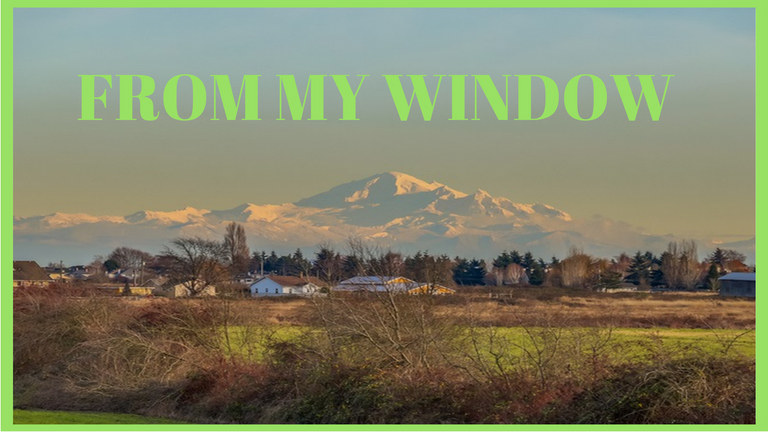
I am lucky enough to live in the Pacific Northwest. In fact I live in a small town call Tsawwassen. It is part of a bigger corporation called Delta. The population of our town is approximately twenty two thousand.
We live in a lovely house that overlooks forty-seven acres of farmland. That wonderful view has wrapped around my heart. As I look out my window across the farmland I see Boundary Bay, the North Shore Mountains of Vancouver, the west side of Mount Baker, and the Cascade Mountains to the south. The sunrise from behind these mountains takes my breath away.
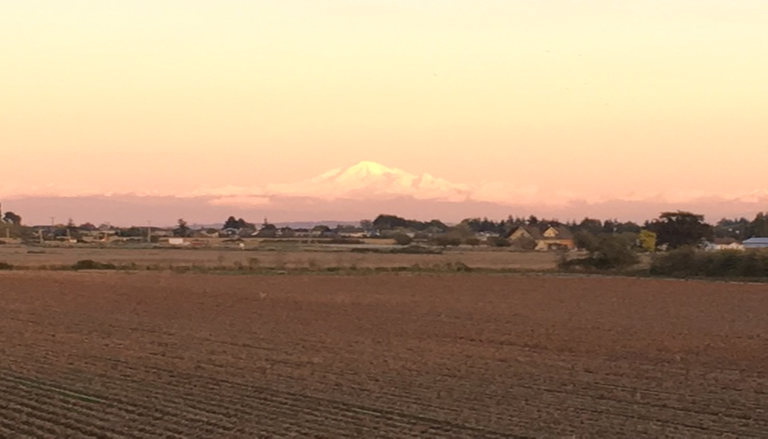
Boundary Bay
Boundary Bay is situated on the border between Canada and the United States. Delta wraps the bay on the west and the north. The Tsawwassen border is on the west side and encompasses the Boundary Bay Regional Park. The eastern side is Crescent Beach, Ocean Park, and White Rock that are all part of the City of Surrey. When the tide is low it is possible to almost walk across the mud flats all the way from Tsawwassen to Crescent Beach. The Boundary Bay Regional Park is part of the Pacific Flyway. As a result it is a wonderful place for bird watchers.
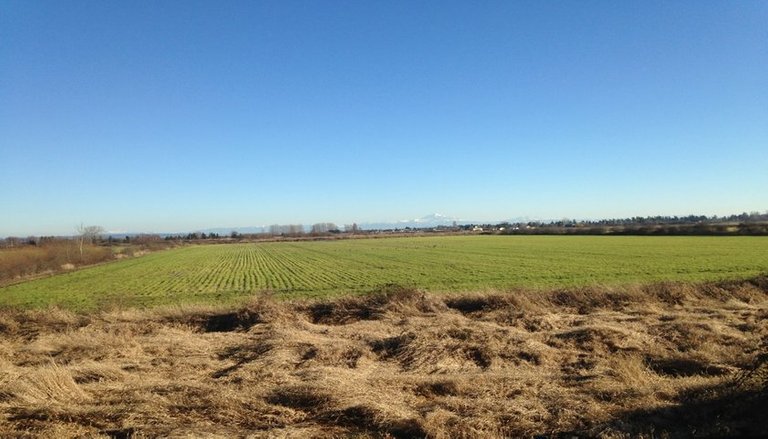
The Farmland
We feel very lucky because from the front of our home we look like an executive home in a rather upscale neighbourhood, while at the back we look over forty-seven acres of farmland. It is like the best of both worlds.
These acres are farmed every year. Very often the crop is potatoes but on the third year a grass crop is planted. This is usually barley. We love this crop because in the fall it is golden brown that is so beautiful. One year the farmers planted peas. This was done under contract and did not turn out very well. That year we had a warm sunny summer. By harvest time the peas had all dried up and the crop was a failure.
Because the fields are part of the Pacific Flyaway in the fall the farmers are obliged to plant a grass crop. The grass helps to feed the winter birds.
The Birds
One of the many joys of the farmland below us is the ability to see many different birds in the fields.

Source
Canadian Geese
The Canadian Goose is probably the most prominent of these birds. Most of geese stay all winter. Here in the Pacific Northwest the winters tend to be mild and wet. Perfect for these geese. They fly from one spot to another all day long and they seem to love rain.
The Canadian Goose is distinctive with their black heads that sport a v-shaped white spot. They tend to have very long necks and a wide wing spread.
In the late summer and early fall we laugh as they practice to fly south. They form a v-flight formation with one bird in the lead. It appears that they are trying out who should lead. We laugh because we know they probably won’t go south.
Snow Geese
In our area the Snow Geese are becoming more and more numerous. They tend to fly in large groups and arrive with much honking descending on the fields. In the air their black wings tend to fool you but as they land the whole field is white. They are travelling from Russia to California and will not spend the winter with us.
Our farmers are quite dismayed by their increasing numbers as they do great damage to the local marches and farmland. Unlike most other birds the Snow Geese dig deep into the ground and destroy the whole plant. They can reduce a hay crop by as much of 40%.
Blue Herons
Along the bushes in the fields we can see Blue Herons. They are so stately. Unlike the geese they tend to be either alone or with their life partner. Watching them it seems like they never move. They stand very, very still until they spot their prey. On the farmland they tend to consume the grasses however we know there are many rats and mice in the field and we hope the herons are eating lots of them.
Bald Eagles
The Bald Eagles with their distinctive white heads are so numerous in our area that we tend to wonder why they are not the Canadian bird rather than the U.S. bird. They are large magnificent birds that mate for life so we often see them in pairs. We see their large nests everywhere in our area. When they soar over our fields they appear to be very purposeful. As we watch them swoop down on their prey we are in awe of their graceful flight.
Other birds that pass by our windows are raptors of various kinds, crows, robins, woodpeckers, sparrows, swallows, hummingbirds and starlings.
The Coyotes
Although we don’t often see the coyotes that live in our fields but we understand that as many as a dozen are there. Just around midnight we can hear them howl. I always hope that they are not catching one of our neighbour’s cats. Apparently they are about the size of a midsized dog. They feed on rats, mice, possibly squirrels, voles, and birds. In spite of the large bird population that is in the fields we have never actually seen a coyote catch a bird. May be this is done at night when the birds have settled down for the night.
The Last Word
In conclusion the scene from my window changes often. It is always interesting. It soothes my soul and renews my spirit.
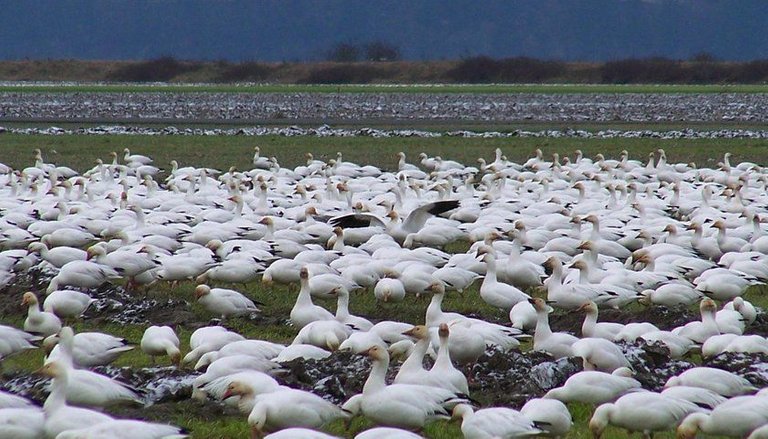


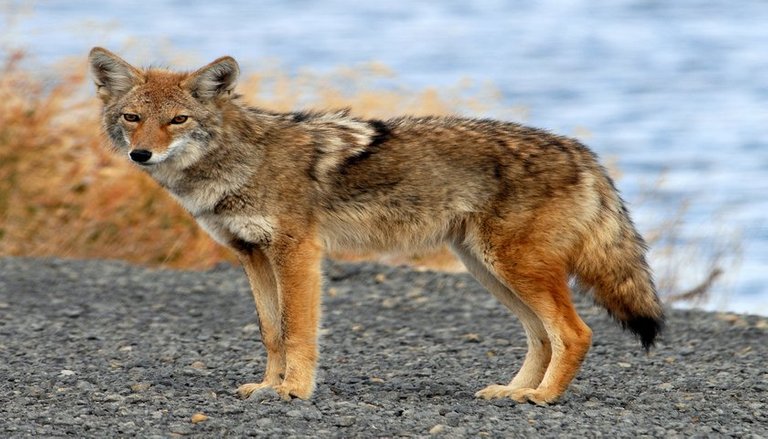
I don't understand. Can you explain what is meant by this.